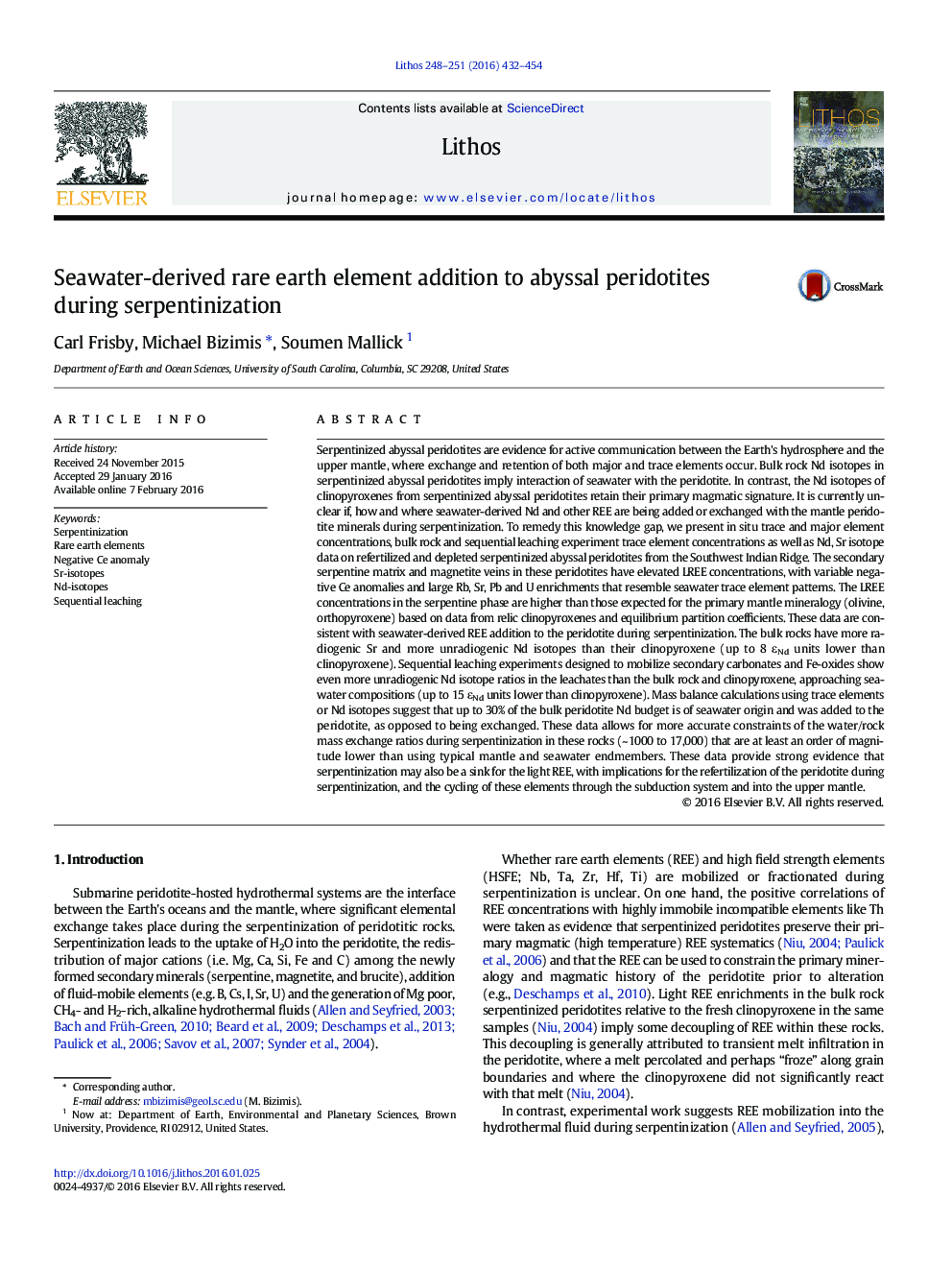| Article ID | Journal | Published Year | Pages | File Type |
|---|---|---|---|---|
| 6440416 | Lithos | 2016 | 23 Pages |
Abstract
Serpentinized abyssal peridotites are evidence for active communication between the Earth's hydrosphere and the upper mantle, where exchange and retention of both major and trace elements occur. Bulk rock Nd isotopes in serpentinized abyssal peridotites imply interaction of seawater with the peridotite. In contrast, the Nd isotopes of clinopyroxenes from serpentinized abyssal peridotites retain their primary magmatic signature. It is currently unclear if, how and where seawater-derived Nd and other REE are being added or exchanged with the mantle peridotite minerals during serpentinization. To remedy this knowledge gap, we present in situ trace and major element concentrations, bulk rock and sequential leaching experiment trace element concentrations as well as Nd, Sr isotope data on refertilized and depleted serpentinized abyssal peridotites from the Southwest Indian Ridge. The secondary serpentine matrix and magnetite veins in these peridotites have elevated LREE concentrations, with variable negative Ce anomalies and large Rb, Sr, Pb and U enrichments that resemble seawater trace element patterns. The LREE concentrations in the serpentine phase are higher than those expected for the primary mantle mineralogy (olivine, orthopyroxene) based on data from relic clinopyroxenes and equilibrium partition coefficients. These data are consistent with seawater-derived REE addition to the peridotite during serpentinization. The bulk rocks have more radiogenic Sr and more unradiogenic Nd isotopes than their clinopyroxene (up to 8 εNd units lower than clinopyroxene). Sequential leaching experiments designed to mobilize secondary carbonates and Fe-oxides show even more unradiogenic Nd isotope ratios in the leachates than the bulk rock and clinopyroxene, approaching seawater compositions (up to 15 εNd units lower than clinopyroxene). Mass balance calculations using trace elements or Nd isotopes suggest that up to 30% of the bulk peridotite Nd budget is of seawater origin and was added to the peridotite, as opposed to being exchanged. These data allows for more accurate constraints of the water/rock mass exchange ratios during serpentinization in these rocks (~ 1000 to 17,000) that are at least an order of magnitude lower than using typical mantle and seawater endmembers. These data provide strong evidence that serpentinization may also be a sink for the light REE, with implications for the refertilization of the peridotite during serpentinization, and the cycling of these elements through the subduction system and into the upper mantle.
Related Topics
Physical Sciences and Engineering
Earth and Planetary Sciences
Geochemistry and Petrology
Authors
Carl Frisby, Michael Bizimis, Soumen Mallick,
